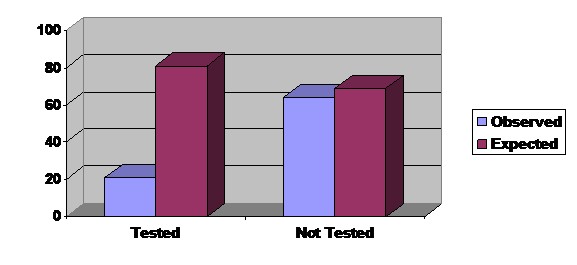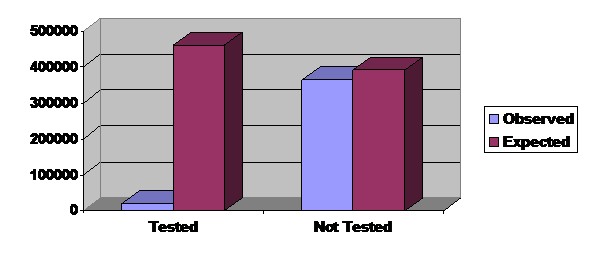Physical assessments or pre employment checks are accepted as a prerequisite to employment in many industries, particularly for safety-sensitive job positions. Such assessments routinely include vision and hearing tests for employees (for example heavy goods vehicle drivers), drug and alcohol testing (for example in the airline industry for pilots), and hearing and spirometry tests required to meet health and safety standards (for example in heavy manufacturing environments).
Employers may also be interested in a prospective employees’ ability to perform physical portions of essential job functions. This may be assessed through physical ability testing. Moreover, employers may have concerns about their employees’ health and overall physical fitness as those factors affect productivity, health care costs (sickness absence and related management costs), and compensation claims.
Isokinetic testing helps identify an applicant’s lack of strength which may prevent them from safely performing the job.
In many cases, the lack of strength is due to previous injuries, or pre-existing conditions, that are likely to be aggravated by the physical demands of the job being offered.
In contrast to a general medical examination, a pre employment physical ability test can be legally used for employee selection. Such tests are not considered a medical examination (Rothstein et al. 1999).
Isokinetic physical ability tests are suitable for individuals who are not currently employed, but have applied to begin employment.
They are usually used where more information about the applicants physical abilities are required.
The assessment is delivered with a vocational bias (the test is tailored to the role) and can help to identify their physical abilities along with activities which they would be unable to participate in/would be potentially vulnerable in. The report will give guidance for any possible adaptations and adjustments.
Combined this all gives the applicant the ability to succeed and most importantly be safe in employment. Overall isokinetic testing helps to identify which employment avenues and applicant should or should not pursue.
The process of pre-employment screening usually involves an initial assessment covering the following key points.
Initial assessment.
A isokinetic physical ability evaluation (PAE) which normally comprises;
Examination.
A comprehensive screening and specific testing process leading to diagnostic classification or, as appropriate, to a referral to an appropriate clinician. Examination has three components: history, systems review, and tests/measures.
Evaluation.
A dynamic process in which the physio/physical therapist makes clinical judgments based on data gathered during the examination.
Overall the evaluation normally focuses on key areas:
Ability.
A present competence to perform an observable behavior or a behavior which results in an observable product.
Activity.
An activity is the execution of a task or action by an individual.
Activity limitation.
Activity limitations are difficulties an individual may have in executing activities.
Capacity.
The highest probable level of functioning of an individual in a given domain at a point in time.
Impairments.
Impairments are problems in body function or structure such as a significant deviation or loss.
Job analysis.
The process of analyzing job duties and responsibilities to quantify functional job demands or performance expectations.
All reports offer high levels of validity (they contain what is technically known as content validity). This is demonstrated by the data showing that the content of a selection procedure is representative of important aspects of performance on the job. For PAE tests to be reliable and valid, specific criteria must be met with regards to reliability, reproducibility and validity of the test. The factors involved in each of these areas are described in the isokinetic PAE validity page:
Benefits:
Helps to match workers looking for employment with suitable job options, appropriate for their physical abilities.
Helps to identify any barriers to employment, such as medical issues, physical health, physical capabilities
Helps to identify physical issues that may arise once in employment that may need to be addressed.
Saves the employer money on potential work days lost and minimises the sickness absence management costs.
Sends a positive message about the employer’s active management of potential employees.
What information do you receive?
The assessment focuses on answering the referrer’s questions, and supplying them with the following information:
What are their physical abilities and limitations?
Can the individual physically perform a specific job?
Which job tasks can they do/ not do?
Are adjustments required for certain roles or occupations?
Would they be better suited to a different job?
A substantial number of employers have reported on the high predictive validity of isokinetic testing as a pre-employment physical strength assessment tool. There is however, little incentive for these corporations to share their injury reduction findings. Even with this in mind there have been many good peer reviewed articles on the subject.
Published Research
Pre-employment screening isokinetically has been heavily researched. The most cited article is that produced by Gilliam et al (2002).
Gilliam et al (2002) looked at the impact of isokinetic screening in two environments (at United Airlines and at Just in Time Delivery) In their study they tested then followed two groups (both containing over 400 people) one group was screened whilst the other was not.
The Tested group analysis showed that 81 injuries were expected but only 21 were observed – a difference of 60 injuries or a 75% reduction.
In contrast for the Not Tested group, the analysis showed that 69 injuries were expected and 64 were observed – a difference of 5 injuries or a 7% reduction (chart A).
Chart A

Further to the analysis of actual injuries they also looked at the cost of those injured.
Chart B shows the differences in the expected vs. observed costs associated with the injuries for the Tested and Not Tested groups.
The expected injury costs for the Tested group was $461,214 and the observed cost was $18,018 or a difference of $443,196, which yields a 2,460 percent reduction.
The expected injury cost for the Not Tested group was $392,886 and the Observed was $364,416 or a difference of $28,470, which is an 8 percent reduction.
The Tested group experienced a reduction in costs 25 times greater than the Not Tested group.
Chart B

Both companies continue to screen their employees with American Airlines having now screened over 1900 employees and Just in Time over 1600 employees. The savings figures have remained consistent.
Rosenblum and Shankar (2006) looked at pre employment isokinetic screening This study investigated the effects of pre-employment physical specific to musculoskeletal disorders of the knees, shoulders and back.
503 new employees from a large employer’s 105 industrial yards were screened and followed for 33 months. A control group of 1423 other new workers was used as the baseline.
There were significant reductions in the frequency and severity of musculoskeletal disorder injuries in the screened employee population. Non-screened applicants were 2.38 times more likely to experience a injury specific to the knees, shoulders and back than screened employees.
They also found the non screened workers incurred 4.33 times higher cost of claims. Among the screened employees the more physically demanding jobs gave the highest injury rates at 7.1 times more likely to experience a injury than less physically demanding jobs.
Anderson and Briggs (2008) performed a blind study over 2 years with new employees. Strength and endurance tests were used to assess applicants’ abilities to meet measured physical demands.
In each of three studies, new-hires were given the tests and then placed on the job. Injury experience and work history were then monitored over the two year period. Injury rates and retention were then compared for individuals who ‘passed’ and individuals who ‘failed’.
As the tests were implemented in several locations, the injury rate for individuals starting employment in the year prior to implementation was compared to the injury rate for individuals starting employment in the year after implementation.
Each of the three predictive validation studies indicated that new-hires who ‘passed’ the battery had a 47% lower worker compensation injury rate and 21% higher retention. A further analysis of 175 pre/post-implementation studies indicated a 41% reduction in worker compensation injuries associated with implementation of ergonomically based physical ability tests.
Harbin and Olson (1994) used post offer pre-employment testing of the lifting capacity of 2,482 uninjured, healthy prospective new employees of a large food production plant. They found that if an employee had the physical capability to perform the essential functions of the job, there was a lower injury rate as compared to the employee not demonstrating the physical strength or ability to perform the essential functions of the job.
The incidence of low back injuries in those workers with the physical capabilities to perform the required functions of their job was 3%. However, among those workers who did not demonstrate the strength or physical abilities to perform their job, there was a 33% incidence of low back injuries.
Their study indicates that physical capacity testing that compares lifting ability to job lifting requirements correlates to work injury incidence. They concluded “the application of appropriate post-offer, pre-placement testing is shown to be a cost-effective method to lower the incidence of work-related injuries”.